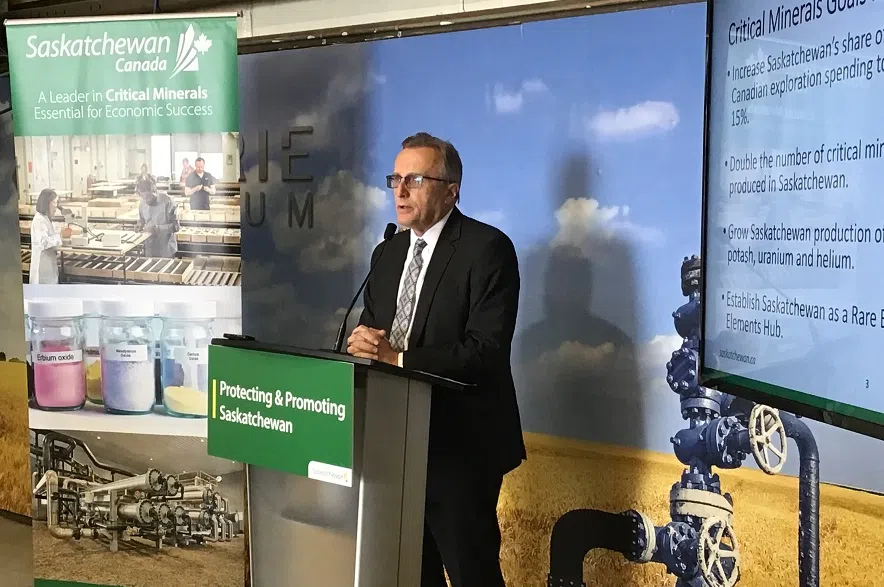Some new incentives have been announced from the province to boost the critical minerals sector.
Two new incentive programs are now in place. One is the Critical Minerals Processing Investment Incentive (CMPII), which will support value-added projects. The other is the Saskatchewan Critical Minerals Innovation Incentive (SCMII) which supports commercial innovation projects targeting 11 critical minerals in the province.
These new incentives will support the development of Saskatchewan’s helium and lithium industries. They will also cover copper, zinc, magnesium, nickel and rare earth elements.
Both are based on oil and gas incentives already in place — the Oil and Gas Processing Incentive and the Saskatchewan Petroleum Innovation Incentive.
Minister of Energy and Resources Jim Reiter was in Emerald Park for the announcement at Prairie Lithium. Reiter said it was about the future, and the incentives will protect and promote Saskatchewan’s leadership role in the sector.
“These new incentives will help us become the critical minerals powerhouse of tomorrow,” Reiter told the audience at Prairie Lithium, one of the players in the critical minerals industry in the province.
How it will work
In a news release, the province states the CMPII and OGPII incentives will share the same $500 million funding pool and be available until March 2029. The province says qualifying applicants investing a minimum of $10 million will receive transferable Crown royalty and freehold production tax credits valued at 15 per cent of eligible project costs.
For innovation-related projects, both the SCMII and SPII will share a funding pool of $100 million and receive applications by March 2029. Qualifying applicants investing a minimum of $1 million will receive transferable Crown royalty and freehold production tax credits at 25 per cent of eligible project costs.
He said this will help them reach their goal of “doubling the number of critical minerals produced in the province by 2030,” a goal included in Saskatchewan’s Critical Minerals Strategy.
The lithium sector sees positives with the announcement. Zachary Maurer, CEO of Prairie Lithium, said the investment incentives will help them take their Prairie Lithium brine project in southeast Saskatchewan into producing lithium on-site next year.
Maurer called the incentives “instrumental to helping to attract the capital that’s required to actually build these projects.”
Donna Bowles, vice-president of land and stakeholder relations with North American Helium said they like the incentives.
“The government’s ongoing support to the helium industry, to incentives which I believe don’t exist anywhere else in other regions, is what sets Saskatchewan above all other regions for critical minerals processing.”
Minister Reiter was hopeful about the prospects for the critical minerals industry in the province.
“We’ve got tremendous potential in Saskatchewan,” said Reiter. “We have a tremendous opportunity for these industries to take off. There’s going to be worldwide demand growing. We have 27 of the 34 critical minerals on the Canadian critical minerals list.”
Reiter said this will “create economic growth,” which will lead to money flowing to priorities such as education, health, social services and others.
“It’s not growth for growth’s sake. It’s growth to get the economic benefit to advantage all the people of Saskatchewan,” Reiter said.
Paul Lloyd, Managing Director of Arizona Lithium, points to the advantage Saskatchewan has as well for his sector.
“With Saskatchewan just in our resource having 6.3 million tons and there’s a lot more there as well, we have a huge resource,” said Lloyd. “Of course, North America is the home of the EV revolution. You’ll find the demand for this commodity will be driven by North America.”











